In New York, an Exhibition Offers a Bold Reimagining of Viewing African Art
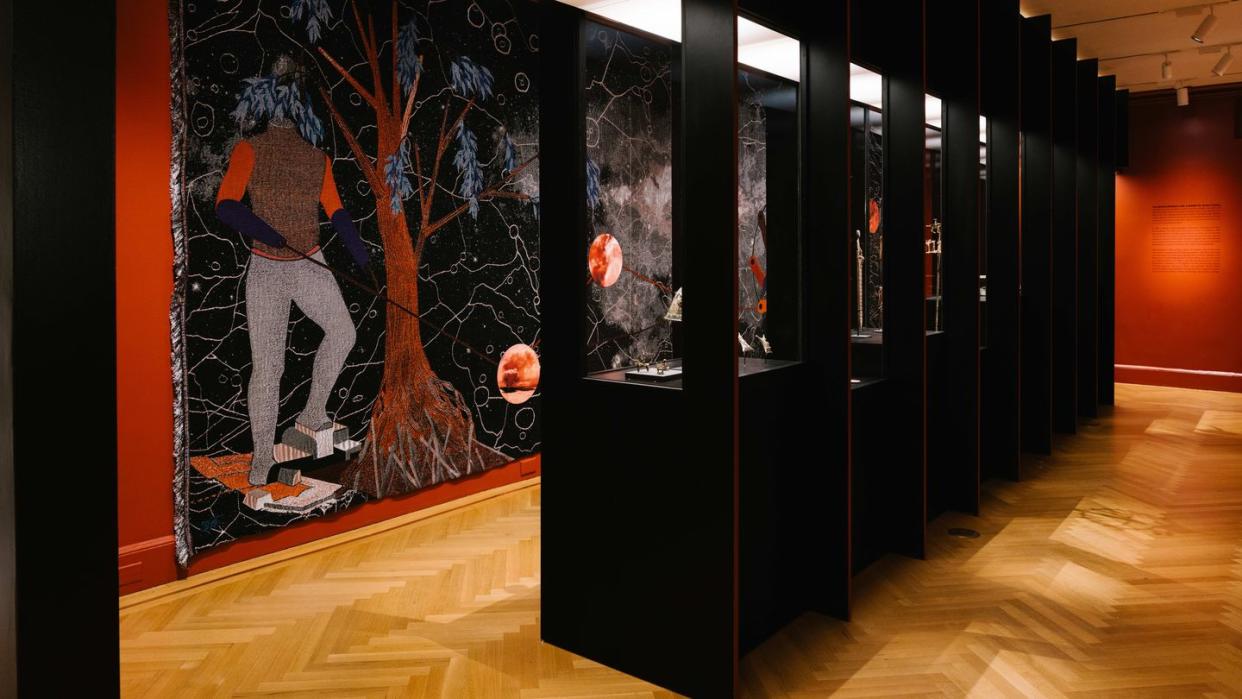
What do you think of when you think of African art? Chances are, you might not even have a fully formed idea. In many Western museums, African art usually is relegated to the least desirable galleries and the objects within them—masterworks of wood, fabric, and metal—are presented beneath poor lighting with even poorer wall text. How exciting—and refreshing—would it be to overhaul this tradition, to present African art in an appropriately rigorous and hallowed environment for us to learn and appreciate these rich and ancient objects?
An illuminating new show at the Bard Graduate Center devoted to the tradition of metalworking on the continent has done just that. “Sightlines: On Peace, Power and Prestige: Metal Arts in Africa” curated by Drew Thomson and on view through the end of December, focuses on one material rather than an unfocused smattering of objects. In doing so, the show becomes an experiment, an exercise in viewing, recontextualizing, and bringing home, as much as it is a tool of instruction and a dismantling of the usual hierarchy in Western art institutions.
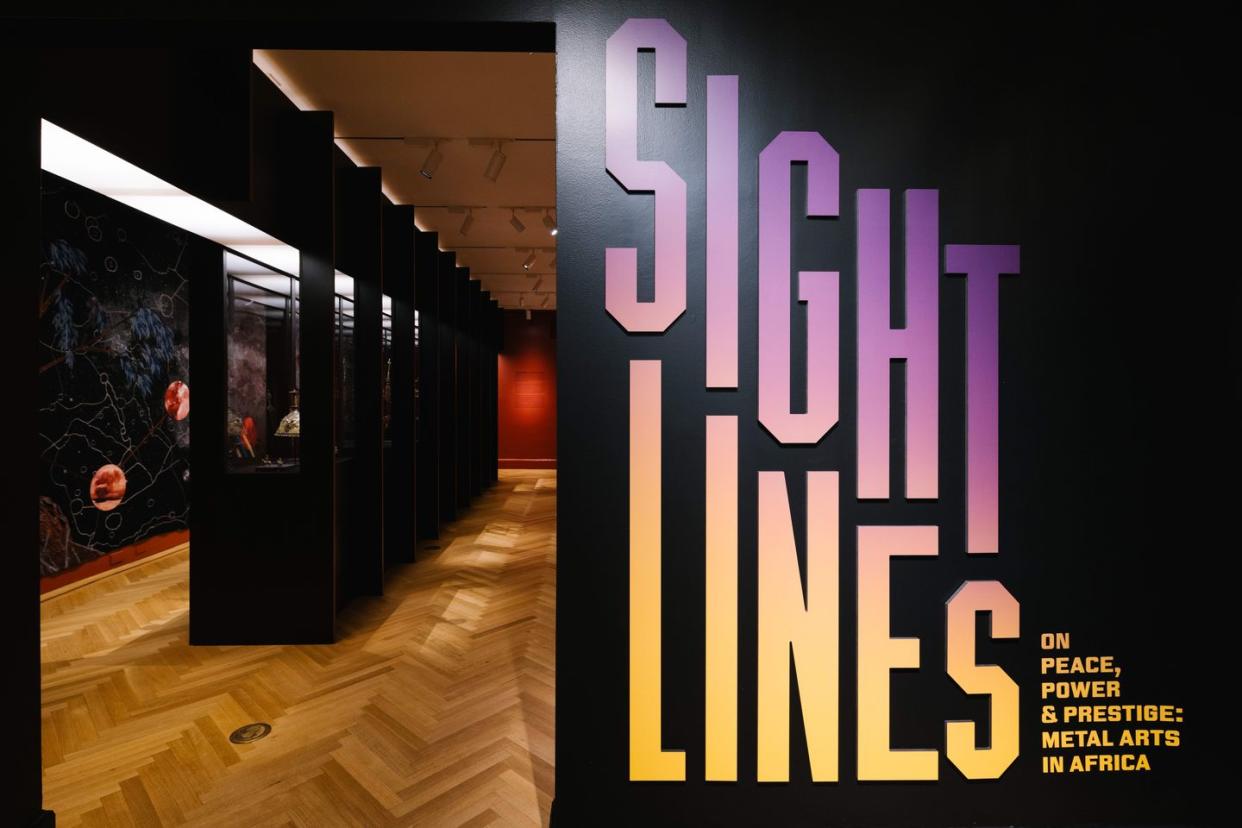
We know that African masks inspired Picasso, that African sculpture inspired Brancusi, that African people inspired a whole slew of Western designers, artists, musicians, writers and so on. In Sightlines, however, Thompson presents African art as valuable in its own right, offering thoroughly researched facts pertaining to each object’s era and place of origin, and—most impressively—encouraging the same interpretive approach that is most frequently used in our analysis of abstract and modern art.
Metal, obviously, is the center of this exhibition, with objects demonstrating the refined metalsmithing that has dominated each corner of the African continent for centuries, long before European colonization. (Notably absent are so-called Benin Bronzes—sculptures, plaques, regalia, and jewelry that were stolen by British colonizers during the 1897 sacking of Benin City. Most of those objects not held in private European collections have been on view in the British Museum.)
Each floor is organized by theme: extraction, architecture, currency, devotion, adornment, domesticity, and protection. Each of these subjects was an opportunity for Thompson to explore the lifespan of the material—from its extraction from the earth to its welding to its use to its formal possibilities. Thanks to exhibition design by Emanuel Admassu and Jen Wood of the New York firm AD–WO, historical examples of African metalsmithing dating back several hundred years are arranged in conversation with contemporary works in the outskirts of each gallery.
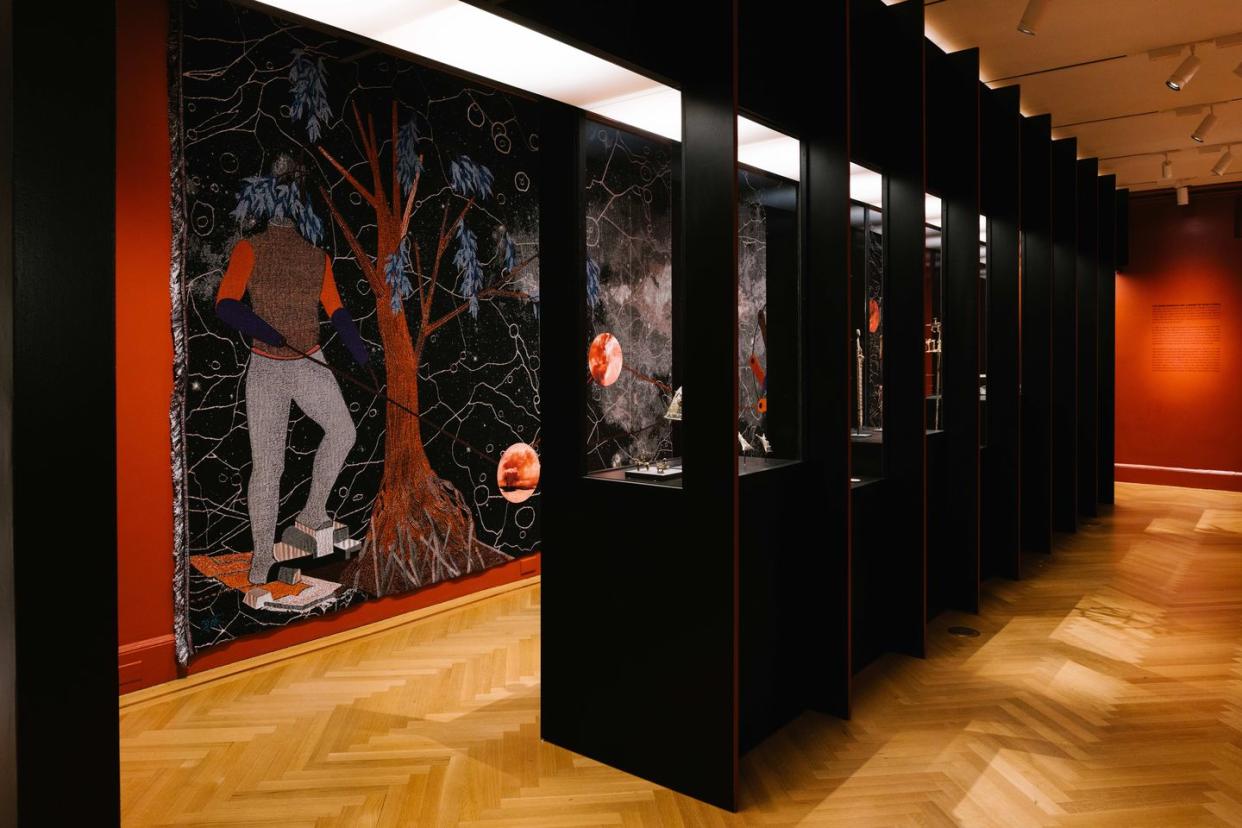
The extraction segment of the show interrogates the economic repercussions and bodily toll of mining, working, and exporting metal. Double Plot (2018), a sprawling, mixed-media tapestry by Belgium-based Nigerian artist Otobong Nkanga and one of the carefully selected contemporary works chosen to support the central theme, acts as the background for this subject, illustrating a very grim tale of how mining warped the African continent beyond recognition for the continued profit of Eastern and Western nations. The tapestry’s large-scale shimmering surface and swirling constellations pull you into an unreal world in an effort to tell a very real tale.
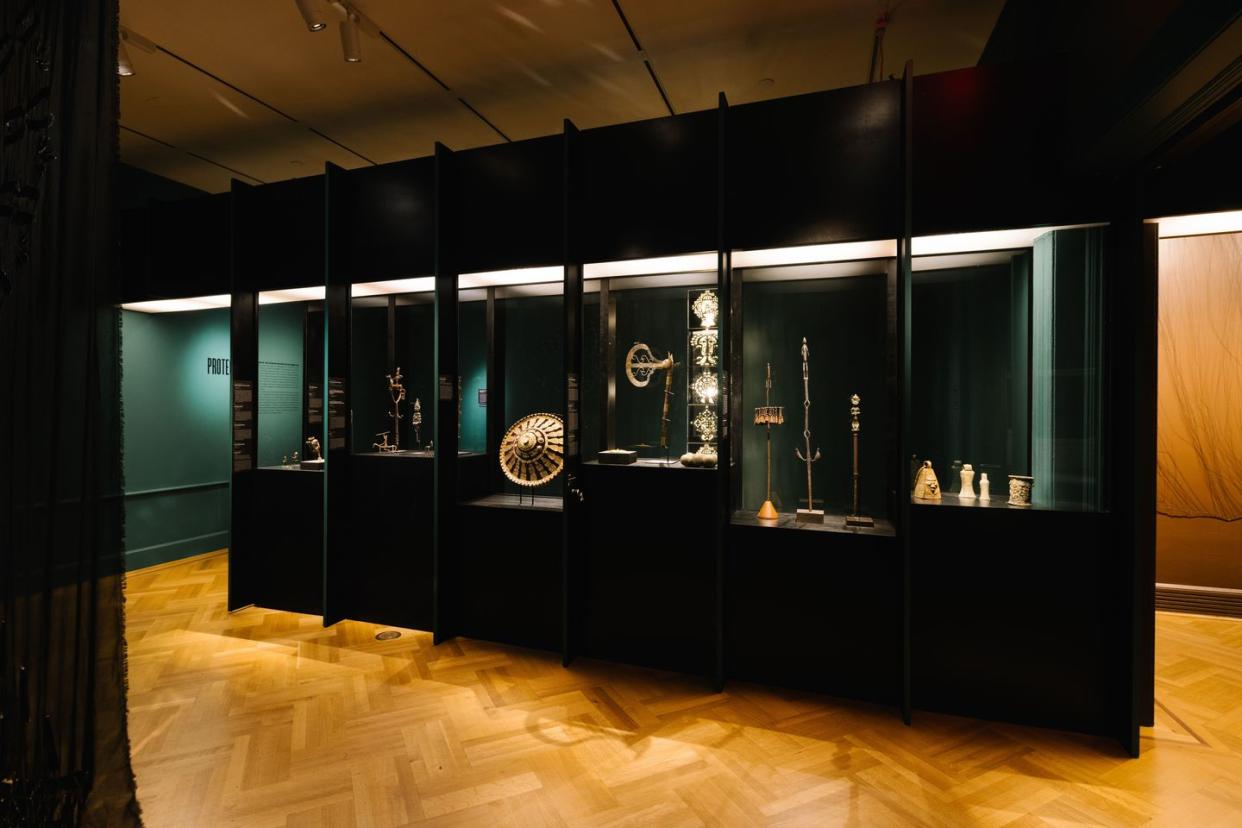
The Devotion portion, meanwhile, presents visitors with undeniably chic examples of religious metalsmithing in a trio of gorgeously rendered Ethiopian Coptic crosses. Just behind them Nari Ward’s sinister tire swing sculpture, Swing Low (2015), haunts the gallery, with equal parts frightful and playful suggestions. Elsewhere, jewelry is presented alongside objects with more physical heft, like a 19th-century iron staff by a Kirdi or Ga’anda artist, topped with a spiked arch with a decidedly spiritual feel. A set of ceramic binoculars by Julia Phillips, though light and fun at first glance, actually pertains to surveillance of the body, particularly those that are Black and perceived as feminine.
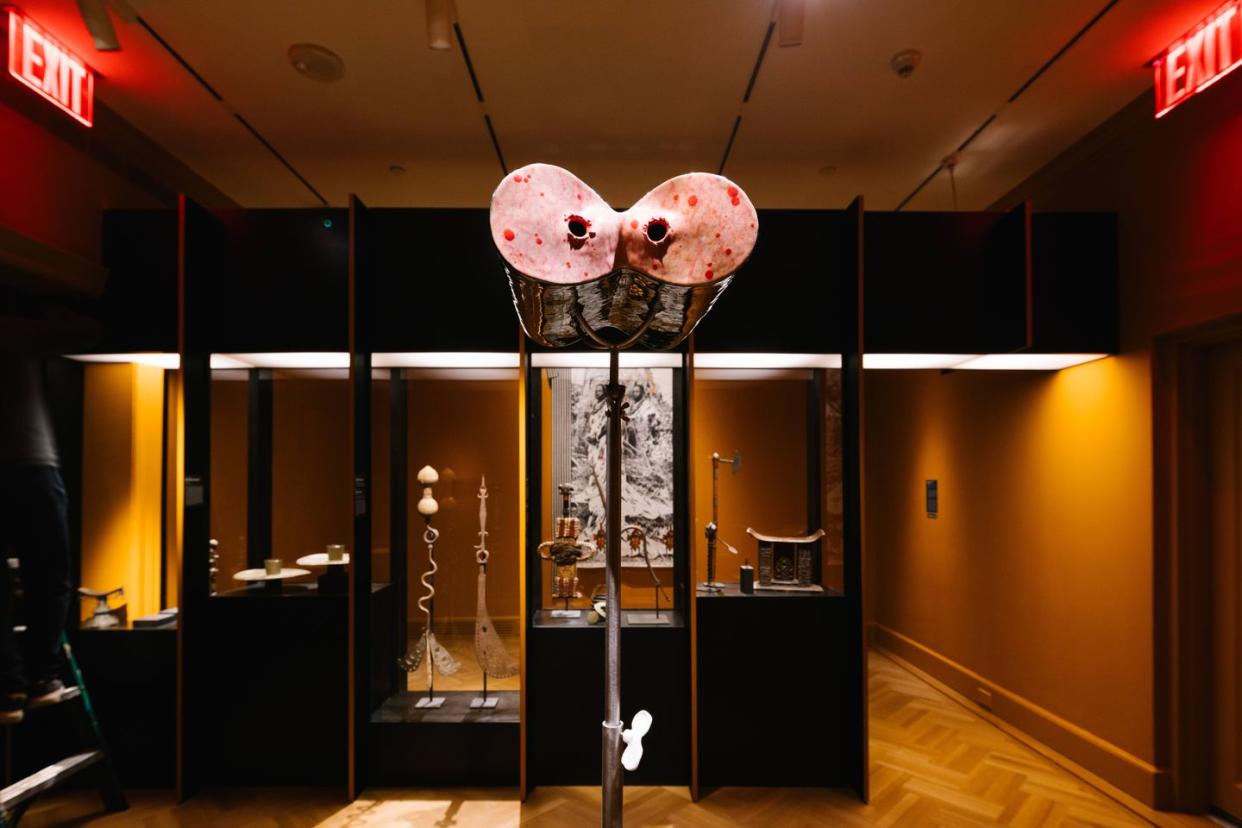
Domesticity is a particularly poignant theme, given that the Bard Graduate Center is housed in what was once a residential townhouse. Two works by contemporary artist Abigail Lucien bisect a wall abutting the central staircase, suggesting the sister states of light and dark within domestic settings—as homes can be both spaces of safety and spaces of turmoil. In this work, and everywhere else, the exhibition is unfailingly honest. It is designed to stretch our minds and vibrates with possibility, welcoming visitors to consider the lives these objects held before they entered into institutions—and the lives they may yet lead.
You Might Also Like
